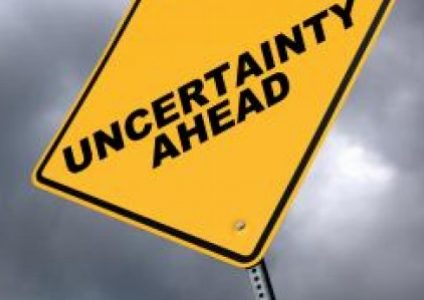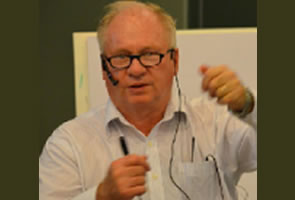
“How do we justify truly innovative projects when hard numbers are lacking?”
By definition, truly innovative projects will have few, if any, ‘hard numbers.’ You might hit it big – or not. But like the lottery, you have to play to win. The challenge is securing resources and having a realistic plan to hang in there until it makes sense not to.
According to technology and innovation expert Jay Paap, president of Paap Associates, a common mistake companies make is to minimize risk by waiting until unknowns are resolved. Unfortunately, the consequence is missing the window of opportunity while competitors step in.
There is a better way!
Manage exposure versus risk
Paap advises product developers to manage exposure to risk rather than worry about risk itself. Exposure, Paap explains, refers to loss of investment (time, money), loss of reputation, and loss of opportunity. Exposure can be managed, even if uncertainty can not.
Exposure to lost investment can be managed by partnering, spinoffs, and willingness to kill projects when needed. Exposure to lost reputation can be managed by shifting the definition of success. Exposure to missed opportunities can be managed by moving quickly without knowing all the answers.
The main idea is to refocus on exposure – this enables organizations to invest in projects with great potential benefit even when there are significant unknowns.
Project reviews and rational decision-making
Once this new context has been established, the next stage is reframing project reviews. Innovative project reviews should focus on the opportunity versus ‘the plan.’ Track what you learn about the market, technology, and options (versus ‘targets’) and re-define success as making good decisions (continue, speed-up, slow down, redirect, kill, spin-off) rather than meeting on-time or budget goals.
As for choosing which opportunities to pursue, Paap offers the following keys to rational decision-making in the absence of hard numbers:
- Ask the right questions.
- Seek the best data possible, which may or may not be quantifiable.
- Involve a broad cross section of organization – for quality and commitment.
- Use formal frameworks to guide collection, storage, analysis, and sharing – be systematic in collection.
- Use ‘informed judgment’ to make the decision – be intuitive.
4 questions to ask – identifying opportunities with landscape maps
He describes how to use landscape maps to identify opportunities. These maps help link together market and technology factors for current and future products and services by asking:
- What product or service characteristics affect purchase/usage decisions – what do your customers value and why?
- How can technology be used to provide or improve these characteristics – what is the role of technology?
- How mature are the needs and technologies – is there leverage?
- Profile the competitors’ capabilities – can you gain an advantage?
NOMMAR – a 6-step rational and risk-sensitive approach to choosing opportunities
The overall approach Paap recommends to evaluating projects – without the numbers — is a six-step approach he calls “NOMMAR”:
N: is there a customer need? (someone will want it) O: are their technology options? (someone can meet the need) M: is there a potential market? (someone will pay) M: is there a business model? (someone could do it) A: do we have a realistic approach? (we could do it) R: is it relevant? (we should do it)For each of these steps, he outlines the inputs and data sources to use:
N: Customer Need. Look at needs versus wants/requests – customer vs. product — as well as current and future customers and needs. Data sources and tools: Customer insight: (VOC, MOC, visits, planning, etc), unobtrusive methods (internet, trade shows, ethnography, etc), problem research / context analysis, ‘Lead user,’ technology forecasting.
O: Technology Options. Take stock of existing technologies – your firm or industry, and other industries. Also explore emerging technologies designed as replacements and organizations with similar problems. The key is to focus on problem/need not expected solution. Think broadly. Data sources and tools: standard CTI resources (patents, literature, VCs, grants, etc); Technology Scouting; ‘Customer Focused Technology Planning.’®
M: Potential Market. Check past innovation adoptions/analogs and customer interactions. Be sure to realistically assess resistance. Data sources and tools: Potential customers, related markets and leading industries. If incremental, use quantitative tools like conjoint analysis and value/benefit assessment relative to alternatives.
M: Business Model. Models are ‘rules of game’ – independent of players. Look at past adoption trends for innovation and analogs of approaches used in other industries. Look at both numbers and logic – “I could see this being big.” Data sources and tools: Customer interactions, analogs, imagination.
A: Realistic Approach. Fit with three Rs: resources, risk, resistance. Consider all development options: traditional, corporate venturing/OI; internal ventures, partnering, acquisition, licensing, spinouts. Data sources and tools: Roadmapping of technical requirements; risk management (alliances, opportunity focused gates, spin-outs and licensing, etc.). Do a mini-business plan only, before relevance review.
R: Relevance. Fit with strategy, fit with image. The key is to look at both what an opportunity does and what it prevents you from doing. Data Sources and tools: Strategic vision, clear portfolio management and balancing guidelines.
Bottom Line
Paap reminds us that “innovation cannot be ordered, but orderly processes can increase the level of innovation.” Often the best opportunities are the least quantifiable. While risk may seem higher without numbers, this should not be a deterrent when it comes to innovation. The key is to think of risk exposure rather than the unknowns, and to ask the right questions (NOMMAR). By applying this framework to new ideas, your decisions will be sound.
For further insight:
Jay Paap’s acclaimed two-day course Product & Technology Roadmapping for Future Growth will be held November 14-16, 2o18 in Cambridge, MA. Participants receive templates, examples, and individualized action steps as well as access to Jay for implementation questions after the class has ended. Seats are limited, reserve online or call 781-801-8080.

